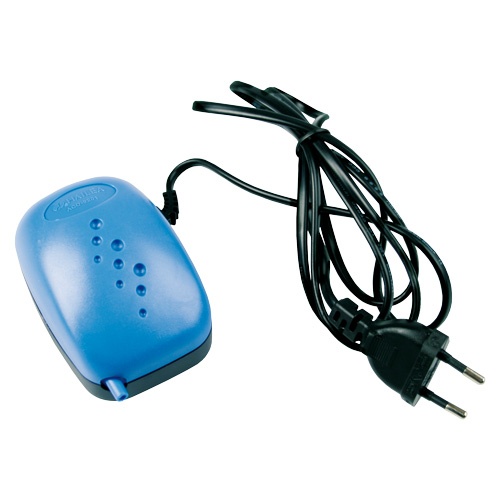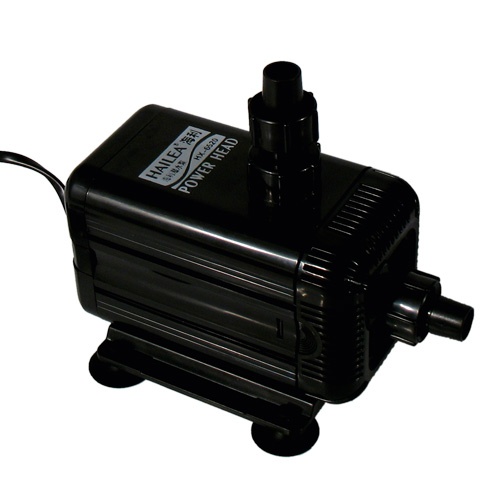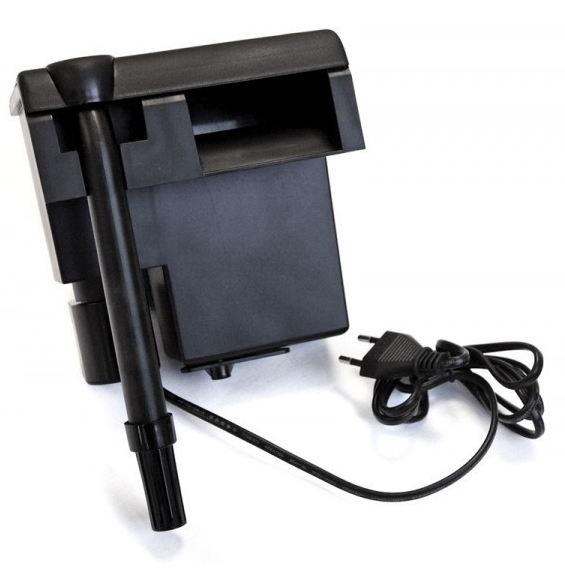The Deep Water Culture Boom and Everything You Need to Know About Deep Water

This is our cannabis deep water guide to growing marijuana. Deep water cultivation is a special and now very popular hydroponic growing method with convincing advantages. It is therefore already used by many growers. In the following, we want to give you a step-by-step guide that makes it easier to start your own deep water cultivation and also achieve fat, potent yields with it.
The basic idea behind deep water cultivation is that nutrient-rich water flows through the roots of the plants into a reservoir, thereby nourishing the plant. The (free-hanging) roots are allowed the best access to water, oxygen and nutrients without a medium. While the leaves of the cannabis plant need CO2, the roots need oxygen. Cannabis roots normally get their oxygen from the irrigation water. The water in a deep water system is constantly moving and the roots therefore get a lot of oxygen. The roots are in lattice pots from which they grow out. As they grow, and quite soon, the roots start to grow downwards into the container towards the nutrient solution. Deep water systems, when properly cared for and equipped, produce monster roots and plants with incredible power and fat yields.
Deep-water cultivation and its various designs are among the best cultivation methods for consistently obtaining very large and fast harvests. Deep water systems, like other hydroponic systems, come in different designs and variations. The most popular and easiest to use are the "bubble pots" such as the Hortipot.

Equipment for deep-water cultivation
- The Deep Water setup requires a pump to bring or pump the nutrient-rich water from the reservoir (nutrient tank) to the plant roots. The water is pumped over the roots and then runs back into the nutrient tank. In addition, an air pump/bubbler with a bubble stone is essential in the nutrient tank to enrich the water with oxygen and ensure that the plant roots get enough of it. Both the air pump with bubbler and the water pump run 24 hours a day.


A high-quality air pump is the heart of a DWC system
- Small pots are used to stabilise the plants. Lattice potswhich are hung in the lid of the Deep Water reservoir. These are usually filled with a little expanded clay. Very soon, the roots of the young cannabis plant start to grow out of the grid pot and towards the nutrient solution of the reservoir.

- In deep-water systems with a central reservoir, an additional Biofilter should be used to ensure ideal water quality.

- A sufficiently large reservoir (container)/bucket with lid is also needed. The reservoir or bucket of the system must be black so that no light can reach the root zone.

- Liquid thermometer for checking the temperature of the nutrient solution
The advantages of growing with Deep-Water
- very high yields compared to the amount of light / nutrients / time each plant receives
- very fast growth, you can literally watch the plants grow
- easy to use, once a deep water system is set up it requires little effort
- only little space is needed, it can also be used in very small Grox-Box/Grow cabinets
- explosive growth of roots and flowers
The disadvantages of deep water
- Until the set-up is established, some work and time is needed at first; moreover, one has to read up more thoroughly in order to understand hydroponics and this particular method and to be able to use it properly.
- Because with deep water the cannabis roots grow directly in the water, root rot or other problems can occur more easily. However, with a little foresight and knowledge, these problems are easy to prevent.
- Maintaining the right temperature is of great importance in hydroponics and especially in Deep-Water. Deep water works excellently with MH or NDL (sodium vapour lamps) if the temperature can be kept under control. This requires a sufficiently strong suitable fan for the exhaust air and good, fresh supply air. With LEDs Deep Water works particularly well because less heat is produced than with NDLs.
Building DWC (Deep Water Culture)

As you can see in the picture, with DWC, the roots of the cannabis plant have unlimited access to oxygenated and nutrient-rich water, and they also receive oxygen through the air. As a result, cannabis plants can sometimes even grow 2-3cm or more per day if the system is configured correctly.
For fertilising, we recommend cannabis fertilisers for hydroponic systems, which ensure that the plants are sufficiently supplied with all necessary nutrients and trace elements and at the same time do not clog the pumps, e.g. from General Hydroponics or from Advanced Hydroponics
If there are abnormalities in the development of the plants and the reason cannot be found, the water in the nutrient tank should always be changed first. It is advisable to always use less fertiliser than the manufacturer states on the packaging. The amount of fertiliser indicated on the packaging or the amount indicated in the fertiliser chart can be regarded as the maximum dose. The beginner and also the grower who likes to experiment may have to try out a little, observe closely, adjust and gain their own experience. After all, not every variety reacts the same. However, the maximum amount of fertiliser should not be exceeded. The use of a EC meter is absolutely necessary when growing with a deep water system.
At this point it should be said that you may initially lose some plants until you have found the optimum settings and the correct set-up. However, this is quite normal and you should not be put off by it, but find out what the problem is and make the appropriate changes. When using cheap seeds, Bulk Seeds or cuttings, the loss is limited for testing and learning purposes.

Deep water system with central tank
How it works
DWC systems are very simple and inexpensive hydroponic systems. They require a container, an air pump, a water pump and grid pots. The container holds the nutrient solution (usually 10-15 L) and usually contains a plant. The roots grow out of the mesh pot and into the nutrient solution that is in the container.
Light, water, nutrients, air, the right temperature and a suitable planting medium are important for the growth and development of cannabis plants. Growing cannabis plants with deep water works like growing with other methods. The main difference is that instead of a planting medium such as soil, perlite or coco, a nutrient-enriched water with lots of oxygen is used. The plants thus get their extra dose of oxygen and always the right amount of nutrients in Depp Water cultivation by constantly pumping nutrient solution over the roots. This causes the cannabis plants to grow faster than in planting media such as soil, coco or perlite.
With deep water cultivation, the roots are constantly in the water. This can only then This can work if an air pump is used, which constantly brings oxygen into the water or the nutrient solution. If no air pump (bubbler) were used, the roots would literally "drown" and begin to rot and die within a very short time. The air pump together with the bubble stone in the reservoir prevents this and creates bubbles in the water.
What do you have to consider when growing in a deep-water system?
- Every grow system and especially hydroponic systems such as deep water systems must be kept meticulously clean and completely cleaned (+ disinfected) on a regular basis to avoid and prevent contamination with fungal spores, germs, algae and bugs. These could otherwise spread quickly and in large quantities in the warm, humid climate of hydroponics. The nutrient solution in the reservoir should be changed at least once a week. This involves cleaning the reservoir to remove the biofilm that has formed and any algae. In recirculating systems with a central reservoir, a biofilter should also be used to keep the nutrient solution optimal and in good quality.
- A Deep Water Pot normally accommodates 1 to a maximum of 6 plants. However, I recommend only 1 to max 4 plants per pot, depending on the model, because it is easier to handle and the plants and especially the roots can spread more optimally and bigger, which leads to bigger plants and more yield. The Hortipot is a particularly simple and inexpensive system that even beginners can easily manage. One cannabis plant is usually accommodated per Hortipot.
- The roots of the cannabis plants should have enough space in the deep-water system to be able to spread. A plant can only be as strong and as big as its roots. The size of the roots is in direct proportion to the size of the cannabis plant and thus also to the yield.
- The reservoir must be black so that no light reaches the root zone. This would damage the roots.
- The ideal temperature of the nutrient solution in the container is between 17-21 °C degrees. Above 21° the water no longer contains sufficient oxygen and is therefore too warm. Below 16°, the plants slow down their metabolism and thus their development.
- When fertilising, one should generally proceed with caution and in no case use too much of it. In deep-water systems it is relatively easy to overfertilise. There is no soil to act as a buffer or to be flushed if over-fertilisation occurs. Only use mineral fertilisers that are specifically designed for hydroponic cultivation of cannabis plants. Bio-fertilisers are not suitable for deep water systems. There is a special biological mineral fertiliser for hydroponics from GHE, which is a speciality on the market, because it is mineral and yet biological, it is called BioSevia.
- Keep the room temperature constant and under control to maintain the ideal temperature of the nutrient solution (19-22° C).
- Only expanded clay or rock wool may be used for the small net pots in the lid. Soil or coco would not work, clog the pumps and this "bare root zone technique" would also quickly attract pathogens.
- If your plants and flowers develop as rapidly and violently as in most deep-water systems, you can support the rieisgen flowers.
With deep water systems, a longer growing phase is basically made with the cannabis plants. Because the aim here is to achieve the highest possible yields with as few plants as possible and to fill the available cultivation area perfectly. Plants in deep-water systems are usually large plants, not infrequently downright indoor monsters. The plants are only sent into flower when they have already reached a stately size and have already formed several side branches. I send my deep-water ladys into flower from a height of about 30 cm.
Grow Light for Deep Water Systems
The same light sources are used for DWC as for other cultivation methods: Energy-saving lamps and Fluorescent tubes in the initial period, then MH lamps, sodium vapour lamps for the flowering period. High-quality LEDs have proved particularly advantageous Plant LEDs have proven to be particularly advantageous because they produce a high luminous intensity and a very broad light spectrum and at the same time only a little heat. Too much heat can be a problem with DWC, because the nutrient solution must not exceed 22 degrees.

DWC works excellently in combination with high-quality plant LEDs
Which nutrients/fertilisers to use?
There are now some excellent fertilisers available specifically for hydroponic systems or deep-water cultivation. These are specially adapted to the particular type of cultivation and designed in such a way that they do not clog or contaminate systems and pumps. General Hydroponics, Canna or Advanced Hydroponics are well-known manufacturers who have years of experience in producing optimal cannabis fertilisers for hydroponics.
The nutrient solution in the nutrient tank should have a pH value of 5.8-6.2 and must first be adjusted before the plant can be placed in it. Only with the correct pH value can the cannabis plants in a deep water system absorb the nutrients optimally. To measure the pH-value you need a pH test kit or a professional pH measuring device pH-Down or pH-Up additive to adjust it, depending on how acidic or alkaline the water you use for the tank is.
There are "single systems" that stand alone and are quite inexpensive and popular, or modular systems, where several containers are connected to a central reservoir to create a system. Modular systems allow the nutrient solution to circulate from the reservoir to all the planters and back again. Single systems tend to be more difficult to manage in larger systems, but are a good and very productive form of cultivation for a growing area of 1-3 m². For larger cultivation areas, recirculating systems with nutrient tanks and connecting pipes are more common, but these systems must be kept extremely well maintained and clean, otherwise diseases can spread very quickly among the cannabis plants.
The Hortipot Deep Water System

The Hortipot consists of a black 25 L bucket (reservoir) with a net pot in the lid. This net pot is filled with expanded clay and the plant is placed in it. The bucket (reservoir) is filled with the nutrient solution until the level is a few centimetres below the bottom of the net pot. Bubbling stones with suction cups are attached to the bottom of the reservoir, which oxygenate the nutrient solution 24 hours a day. The water pump, which pumps the nutrient solution to the mesh pot and thus distributes it evenly over the roots, also runs 24 hours a day. Switching off the pumps, even for a short time, can cause serious damage to the roots!
The Hortipot is ideal for growers who want a big return with just a few plants. A single plant is placed in each Hortipot and the individual Hortipots are not connected to each other. This has the advantage that diseases or problems do not automatically spread to all the other plants.
Deep water systems are highly interesting and highly recommended to the experienced grower but also to the beginner. With relatively little expenditure of time and money, a highly effective hydroponic set-up can be realised, which convinces with enormous yields and a fast growth period.







